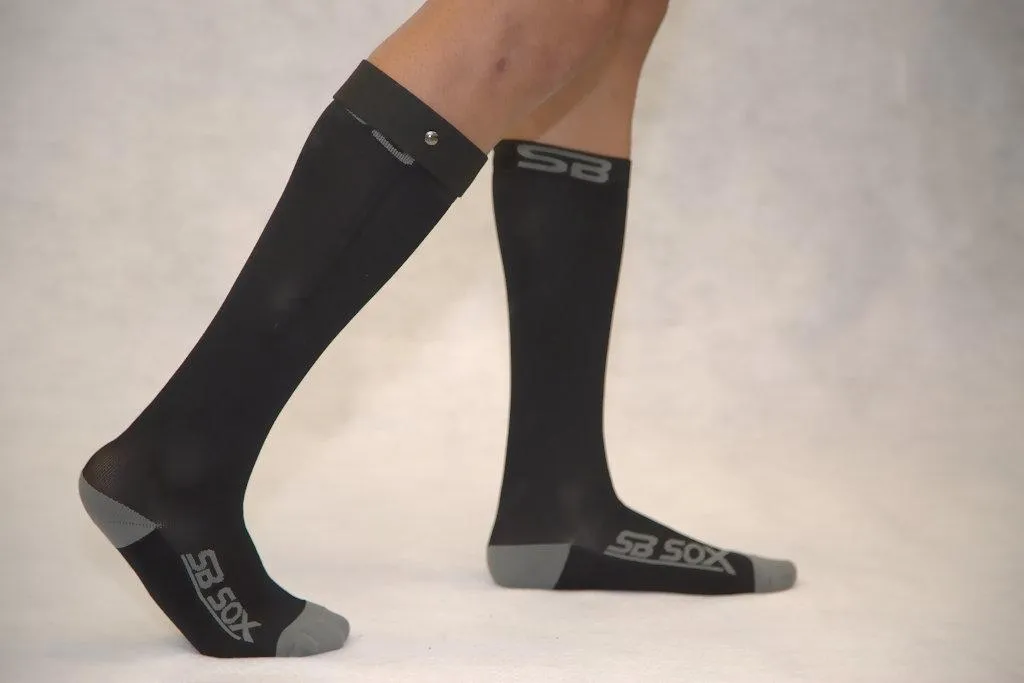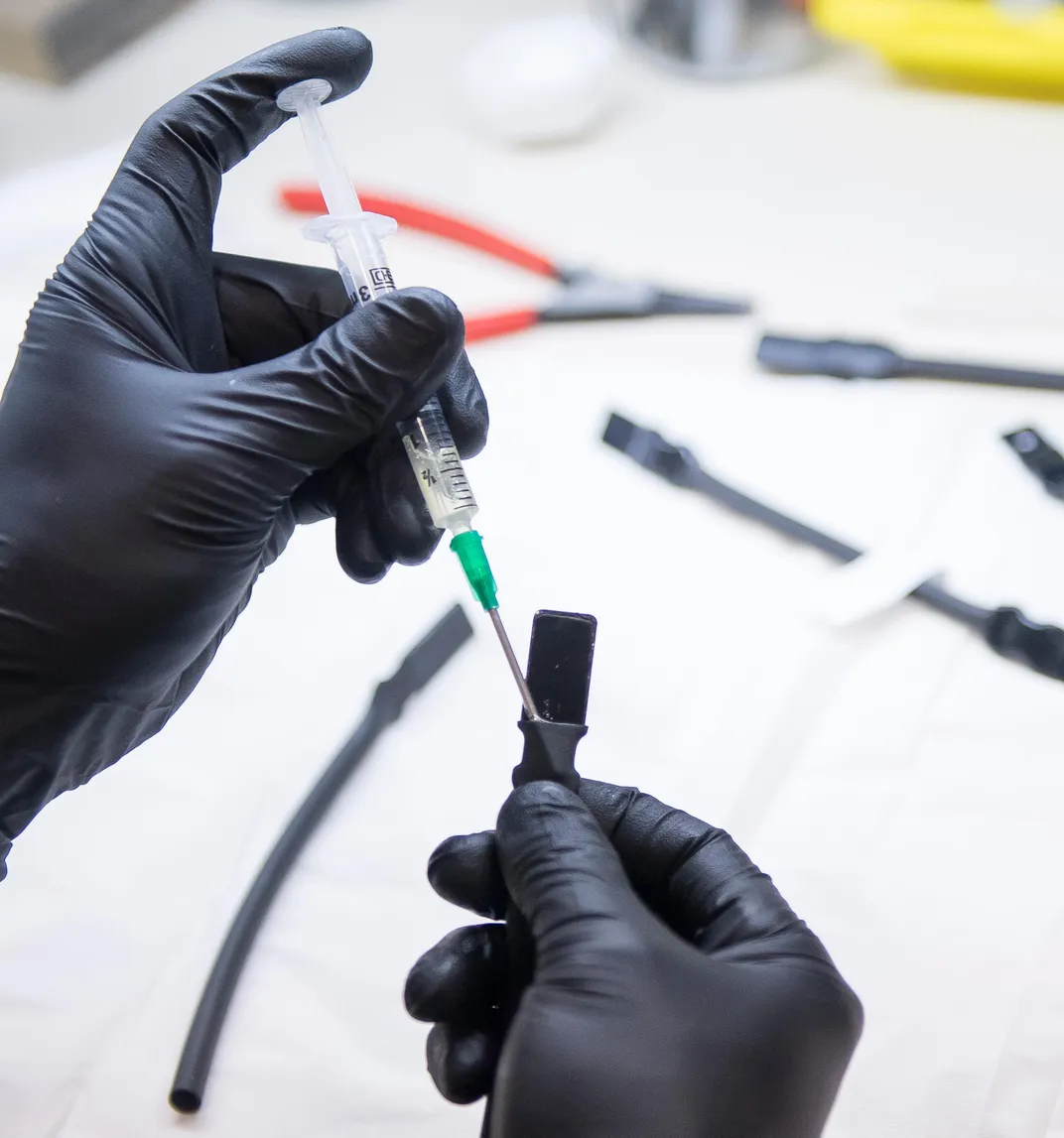Could This Strange Fluid Prevent Concussions and Twisted Ankles?
Army researchers, academics and industry have been using shear thickening fluids for body armor, better football helmets, rehabilitation tools and more
/https://tf-cmsv2-smithsonianmag-media.s3.amazonaws.com/filer/7e/63/7e631135-74ec-48b0-9e0a-23d437f62a4f/22894373164_64466b955c_o.jpg)
Have you ever mixed cornstarch and water together to make “oobleck?” When you squeeze the mixture firmly in your fist it makes a hard ball. But when you relax your grip, it drips like a liquid. It’s a common example of a “shear thickening fluid,” a material whose viscosity increases under stress.
Some scientists think that shear thickening fluids may be the next big thing when it comes to injury prevention and rehabilitation. Materials based on these fluids have the potential to help prevent concussions, neck injuries and twisted ankles; to serve as protective body armor in military settings; and to create new rehabilitation devices.
At the U.S. Army Research Laboratory (ARL) in Aberdeen, Maryland, Eric Wetzel has been studying shear thickening fluids for the past 15 years and holds patents on several techniques and products. Initially he was impregnating Kevlar with shear thickening fluids to make thinner, more flexible body armor. Now, he’s figured out how to encase the fluids in a flexible strap. Pull the strap gently, and it expands like elastic. Pull it quickly, and it stiffens and locks. This technology, which Wetzel calls “RAT straps” (for “rate-activated tethers”), could be useful in a number of areas, from the military to professional athletics to the home.
“What these straps give you the ability to do is allow human motion at regular speeds, but when there’s something really violent happening, they kick in and provide resistance,” Wetzel says.
For the past several years Wetzel has been working with the NFL to develop a system of RAT straps to keep helmets in place and help prevent head injuries. He and his team have built a platform in the lab to resemble the conditions of an NFL playing field, and have subjected a crash test dummy wearing a helmet to repeated tackle simulations. When wearing the helmet attached to its body with tethers running down the neck to the upper back, the peak acceleration experienced by the dummy’s head was reduced by 50 percent. That could be the difference between a minor bump and a serious concussion.
Wetzel expects to have working prototypes of the tethered helmets ready in the next two months, at which point he and his team will begin user testing, initially simply having people wear the helmets to report how they feel, later moving on to actual tackling. If tests are successful, the earliest users will likely be high school athletes rather than pros.
“NFL players won’t wear anything that impedes speed or agility even a bit,” Wetzel says. “They won’t be early adopters.”

Shear thickening fluid-incorporating garments and braces can protect other parts of the body, such as the ankle or knee, as well. This is especially important for soldiers.
“If you look at major causes of lost time for soldiers, it’s typically not that they got shot; the most common thing is actually someone’s twisted a knee, threw out their back, injured their neck,” Wetzel says. “It’s not surprising, because they’re wearing 100 pounds on their backs, running over rough terrain, sometimes at night.”
About five years ago, Wetzel met with researchers from the Defense Advanced Research Projects Agency (DARPA), who were interested in technologies to reduce these kinds of musculoskeletal injuries. Paratroopers are at especially high risk of ankle injuries, as they hit the ground at high speeds. The DARPA team had been working on a rigid shell ankle brace to take the impact. It worked, but the paratroopers couldn’t run in it.
So Wetzel developed a prototype of a brace using shear thickening fluid encased in fabric. This was the original RAT strap technology. Now, one of the DARPA researchers Wetzel met with, Lieutenant Colonel Joe Hitt, has left the army and started a company making braces based on Wetzel’s work.
One of the major causes of ankle sprains is the slowed reaction time that comes with fatigue or surprise.
“Your ankle starts to rotate and you don’t realize it soon enough,” Wetzel says. “An ankle brace really just has to slow down that rotation to give your brain time to catch up.”
An ankle brace based on shear thickening fluid can move with the body like a neoprene sock. But when the ankle begins to turn violently, the fluid stiffens.
In Tennessee, business owner and army veteran Russ Hubbard is turning Wetzel’s RAT straps into devices for physical rehabilitation. Long rubber bands are commonly used for stretching and resistance in physical therapy. Hubbard is making bands filled with shear thickening fluid. The harder you pull them, the tighter they get. And when you let go, there’s no rebound. This means it’s safe for patients to pull the bands as hard as they can without fear of being hit in the face if they drop one end.

“With this technology you always have the ability to be pushing at what your maximum potential is at that very moment,” Hubbard says. “You’re not limiting what the patient’s capable of doing, and hopefully that translates into quicker time of recovery.”
Hubbard is working with researchers from the University of Montana on a study of the bands. If it’s successful, he hopes to have them on the market next year.
Wetzel imagines his tether technology being used down the road as a sort of halfway between clothing and an exoskeleton. Garments made of fluid-filled tethers could support various body parts, remaining soft when the wearer is still or moving slowly, and becoming firm and supportive with sudden motion, such as the collapse of a trick knee.
Interest in shear thickening fluids is "definitely something that's grown a lot in the research community in the past five years or so," says Eric Brown, a professor of mechanical engineering and materials science at Yale.
Scientists have been investigating shear thickening fluids for more than 80 years, Brown says, but they're only really starting to understand how and why they work the way they do.
"We're just mixing water and cornstarch—they seem like simple things on their own," Brown says. "The idea that we don't understand a lot about how that works is sometimes supsrising to people."
Research on impact protection using shear thickening fluids is "really promising," Brown says. He thinks we'll likely see a number of products, such as shear thickening fluid-enhanced bicycle helmets, on the market in coming years. D30, a shear thickening fluid made of polymers suspended in a liquid lubricant, is already used in items from snowboard gear to cell phone cases.
For those of us eager to explore the magic of shear thickening fluid at home, be warned: if you're thinking of filling a kiddie pool with oobleck to "walk on water" like the YouTubers, it's more difficult than it looks. Brown knows—he's done it a few times, just for fun.
"The hardest part is you need to mix the stuff," he says. "We had to rent a cement mixer from Home Depot."
/https://tf-cmsv2-smithsonianmag-media.s3.amazonaws.com/accounts/headshot/matchar.png)


/https://tf-cmsv2-smithsonianmag-media.s3.amazonaws.com/accounts/headshot/matchar.png)